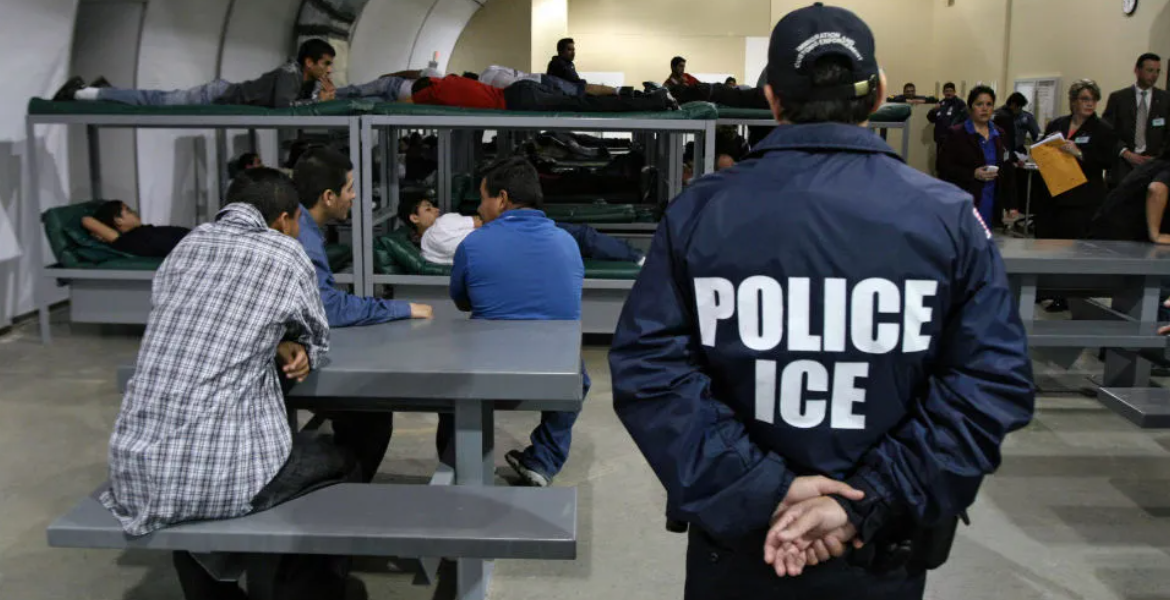ICE Begins Detainee Release as Immigration Centers Exceed Capacity

In response to a record influx of detainees, the US Immigration and Customs Enforcement (ICE) has initiated the release of numerous migrant detainees, with reports indicating that up to 160 individuals were released in a single day.
This action is a direct result of ICE's detention facilities operating at 109% capacity, accommodating approximately 42,000 individuals, exceeding the nominal capacity of 38,521 beds as per internal Department of Homeland Security (DHS) data obtained by CBS News. The surge in detainee numbers follows increased arrests facilitated by the Trump administration, with more than half of the detainees having been apprehended along the southern border. On Monday, the agency resorted to releasing detainees, an operational necessity that arises from ongoing legal and logistical challenges faced by both major political parties over the years.
Those released are frequently monitored via ankle bracelets to ensure compliance. ICE has highlighted that its "enhanced" operational strategies have led to a substantial rise in arrests, thus necessitating additional detention resources. To manage the overload, ICE is collaborating with the US Customs and Border Protection, pursuing additional funding from Congress, and expediting the removal of individuals with criminal backgrounds who have received final orders of removal from immigration judges.
Since President Trump took office, daily arrests by ICE have surged, with figures sometimes reaching 1,000, a notable increase compared to an average of 312 daily arrests during former President Biden’s last year in office. The current administration has rolled back several restrictions put in place by Biden, allowing ICE to target a wider pool of unauthorized migrants, many of whom have no criminal records. Many detainees endure prolonged periods in ICE custody—ranging from days to months—while awaiting the completion of necessary paperwork and legal processes related to deportation.
In some instances, deportation cannot occur due to home countries refusing to accept their nationals, and the Supreme Court has imposed limits on detention periods. Additionally, judges occasionally grant relief from deportation. To address space constraints in current detention facilities, ICE is planning to significantly expand its capacity. An internal memo has disclosed intentions to create 14 new detention sites, each with a capacity for up to 1,000 detainees, alongside four larger facilities designed to accommodate 10,000 beds each.
ICE is also looking for support from other federal agencies to enhance its detention capabilities. The Department of Defense has permitted ICE to detain migrants at a Space Force base located in Colorado, and it has begun relocating detainees to the Guantanamo Bay Naval base, following directives to repurpose those facilities for immigration detention purposes. Further plans under consideration include the establishment of "soft-sided" facilities including tent sites for temporary processing of migrant families and children along the southern border.
However, these facilities present significant operational and security challenges, as they were designed for short-term, not long-term, use.
Contrasting ICE's situation, the Border Patrol currently manages to keep its detention capacity well below maximum limits. As of Tuesday morning, Customs and Border Protection reported holding fewer than 2,000 migrants, utilizing only 9% of its 21,000-person detention capacity. This lower number reflects a period of relative calm along the US-Mexico border, with illegal crossings hitting a five-year low. In January, Border Patrol processed approximately 30,000 migrants marking the lowest level since May 2020.





Add new comment